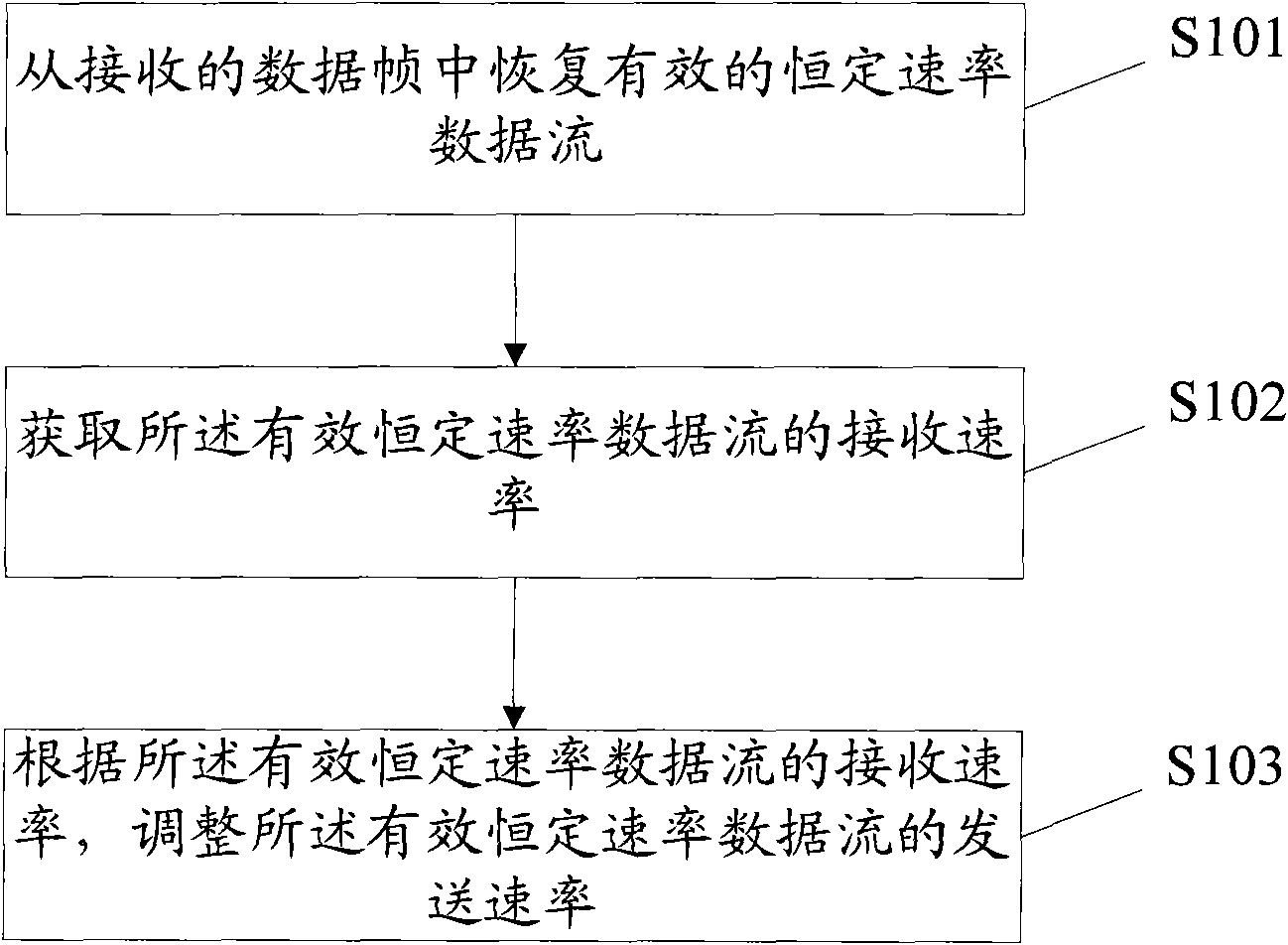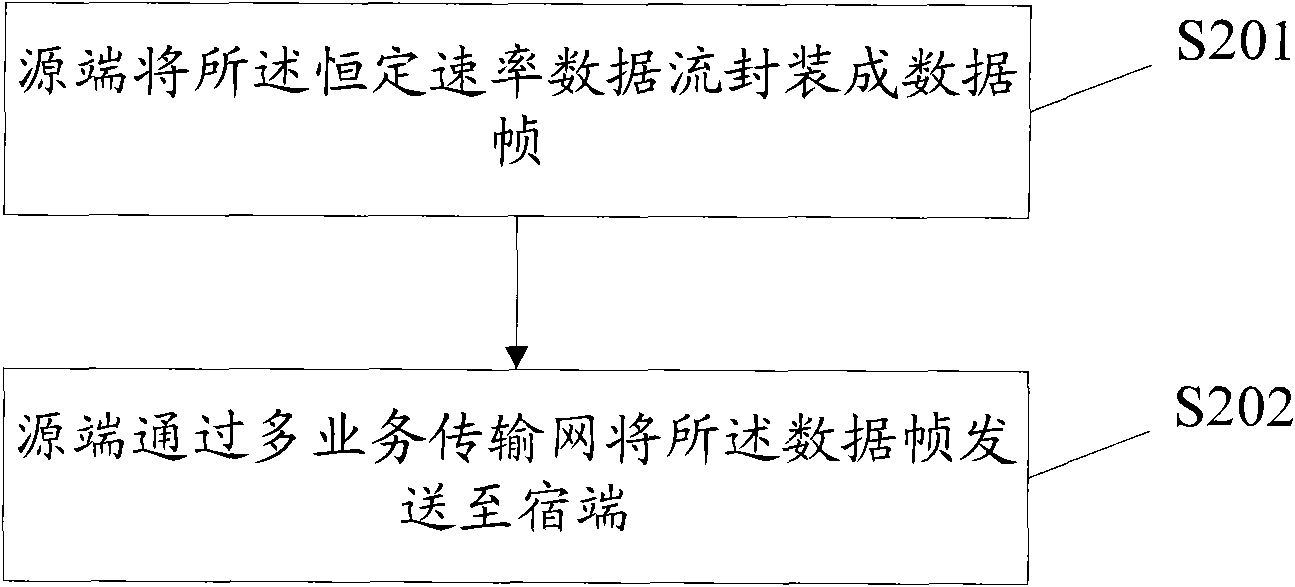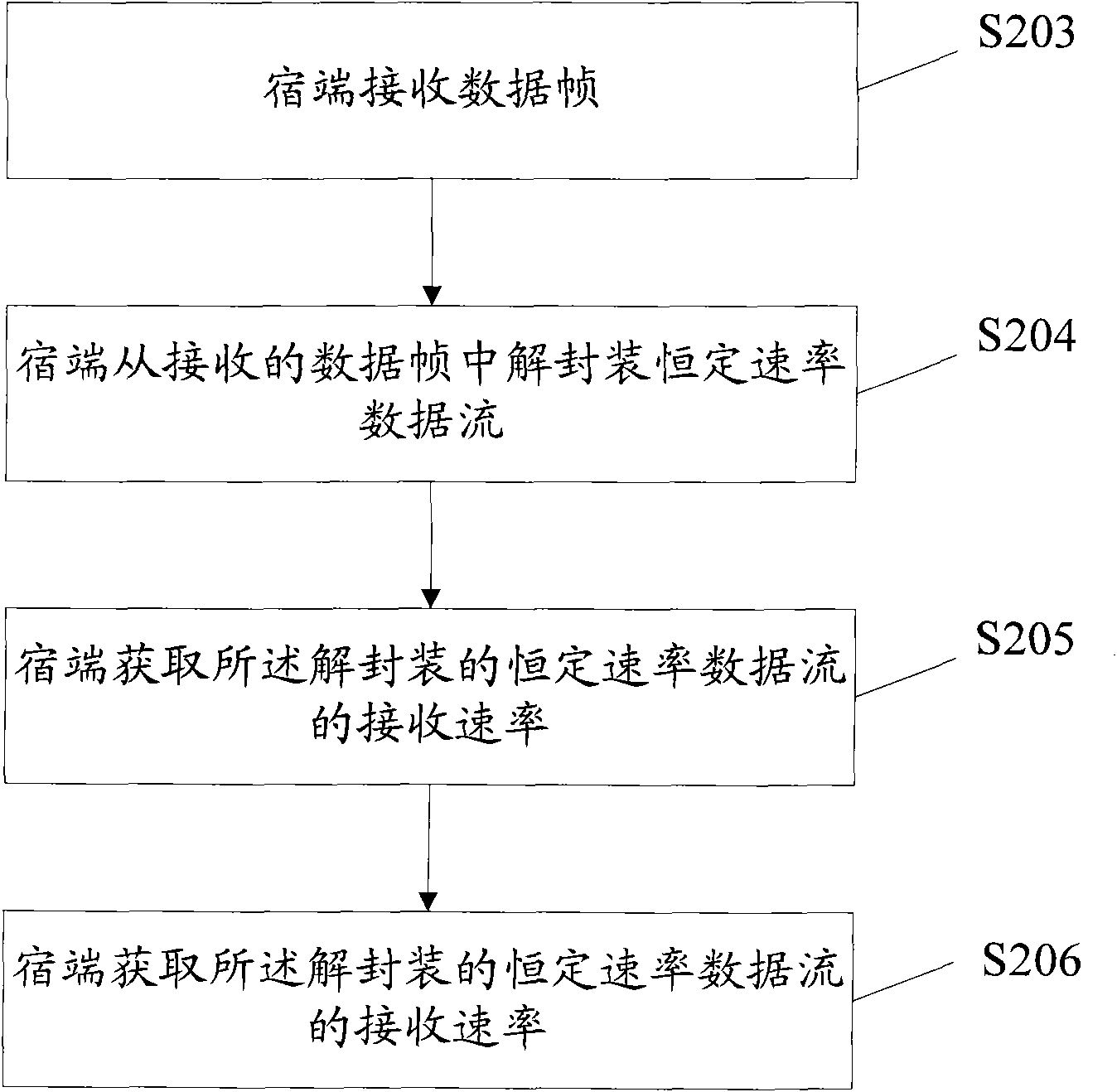Method and device for transmitting constant-rate data stream
A constant rate, transmission rate technology, applied in the field of communication, can solve the problem of uneven reception rate of the sink, irregular time slots, and different transmission rates of data frames.
- Summary
- Abstract
- Description
- Claims
- Application Information
AI Technical Summary
Problems solved by technology
Method used
Image
Examples
Embodiment 1
[0040] Taking the E1 data stream of 2.048Mbit / S±50ppm from the source end to the sink end as an example, the specific process of transmitting a constant rate data stream is as follows:
[0041] The process of inputting a constant rate data stream at the source, such as Figure 2a Shown:
[0042] S201: The source encapsulates the constant rate data stream into a data frame;
[0043] Among them, the constant rate data stream is encapsulated in the data frame with bits as the smallest encapsulation unit, and the length of the payload is fixed.
[0044] Specifically, the source uses bits as the minimum encapsulation unit, which can be 1 bit or more bits. On the one hand, the selection of the smallest encapsulation unit is related to the length of the reference clock. The longer the length of the reference clock, the larger the range of the payload in the data frame each time. Therefore, appropriately increasing the smallest encapsulation unit can also meet the needs of the sink. , That i...
Embodiment 2
[0074] In a multi-service transmission network, taking the source end to the sink end transmitting 2.048Mbit / S±50ppm E1 data stream as an example, the specific operation process of transmitting the constant rate data stream is as follows:
[0075] The specific process of inputting a constant rate data stream at the source, such as Figure 4a Shown:
[0076] S401. The source terminal obtains control information of a constant rate data stream, and encapsulates the control information and the constant rate data stream into a data frame;
[0077] The control information includes the input rate of the constant rate data stream or the rate difference between the input rate and the nominal rate of the constant rate data stream in each reference clock cycle;
[0078] The constant rate data stream is encapsulated in a data frame with bits as the smallest encapsulation unit, and the data frame carries the calculated input rate or rate difference rate information, and the effective payload has a ...
Embodiment 3
[0101] In the method for sending a constant rate data stream provided by another embodiment of the present invention, the specific process is as follows:
[0102] In the above embodiment, the constant rate data stream is described by taking E1 as an example. Since constant data streams of different rates correspond to different payload lengths, the calculation of the payload length can refer to the above formula (1), and the payload length needs to satisfy multiple services The transmission physical clock can carry the data stream at the maximum frequency deviation. Table 1 shows the PL payload length of constant rate client data streams of other rates under the reference clock TS=125us:
[0103] Table 1:
[0104] Data stream type
Nominal rate
Nominal length
PL payload length
T1
1.544Mbit / s±50bit / s
193bit
194bit
E1
2.048Mbit / s±50ppm
256bit
257bit
E3
34.368Mbit / s±688bit / s
4296bit
4297bit
DS3 / T3
44.736Mbit / s±895bit / s
5592bit
5593bit
E4
139.264Mbit / s±2...
PUM
 Login to View More
Login to View More Abstract
Description
Claims
Application Information
 Login to View More
Login to View More - R&D
- Intellectual Property
- Life Sciences
- Materials
- Tech Scout
- Unparalleled Data Quality
- Higher Quality Content
- 60% Fewer Hallucinations
Browse by: Latest US Patents, China's latest patents, Technical Efficacy Thesaurus, Application Domain, Technology Topic, Popular Technical Reports.
© 2025 PatSnap. All rights reserved.Legal|Privacy policy|Modern Slavery Act Transparency Statement|Sitemap|About US| Contact US: help@patsnap.com



